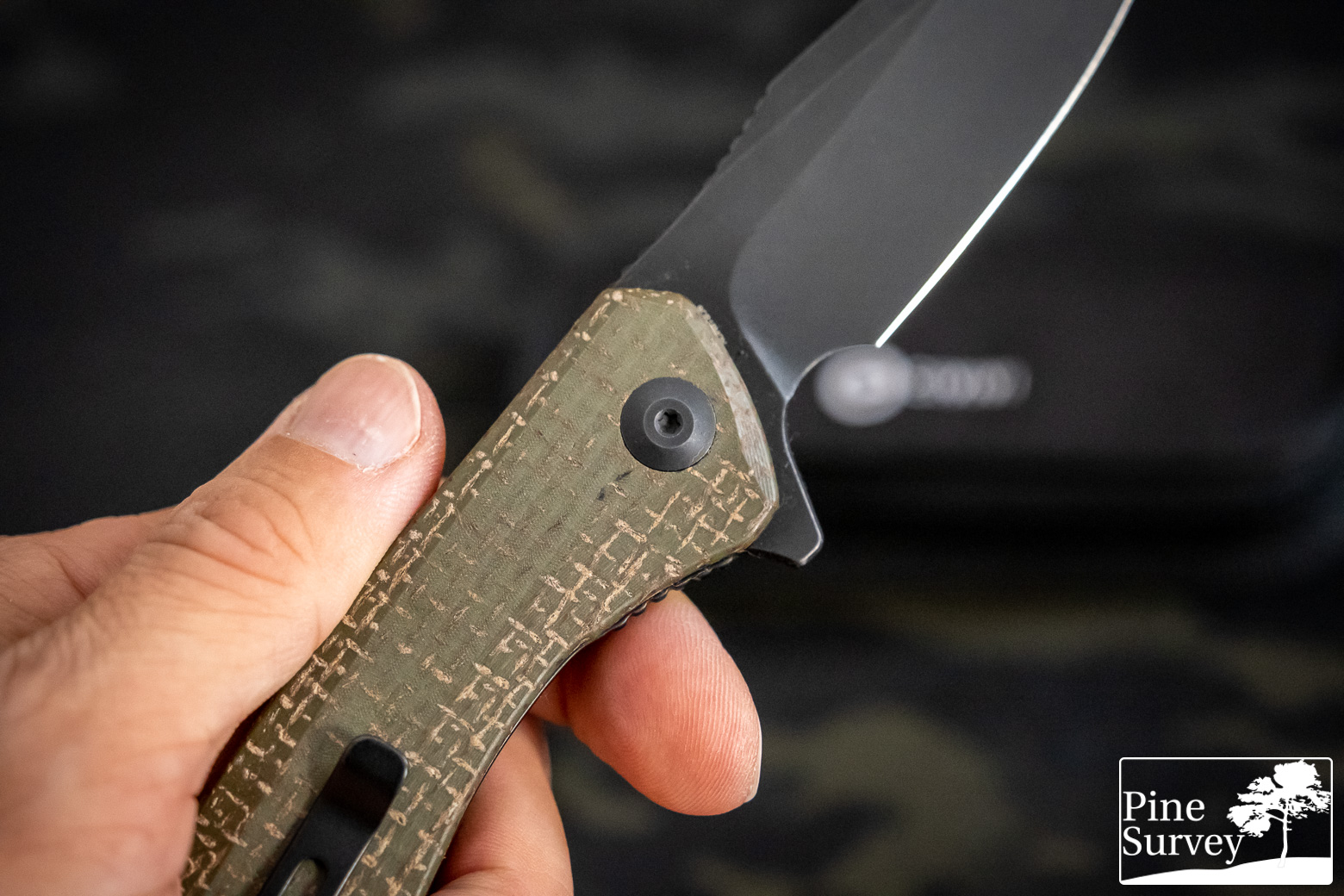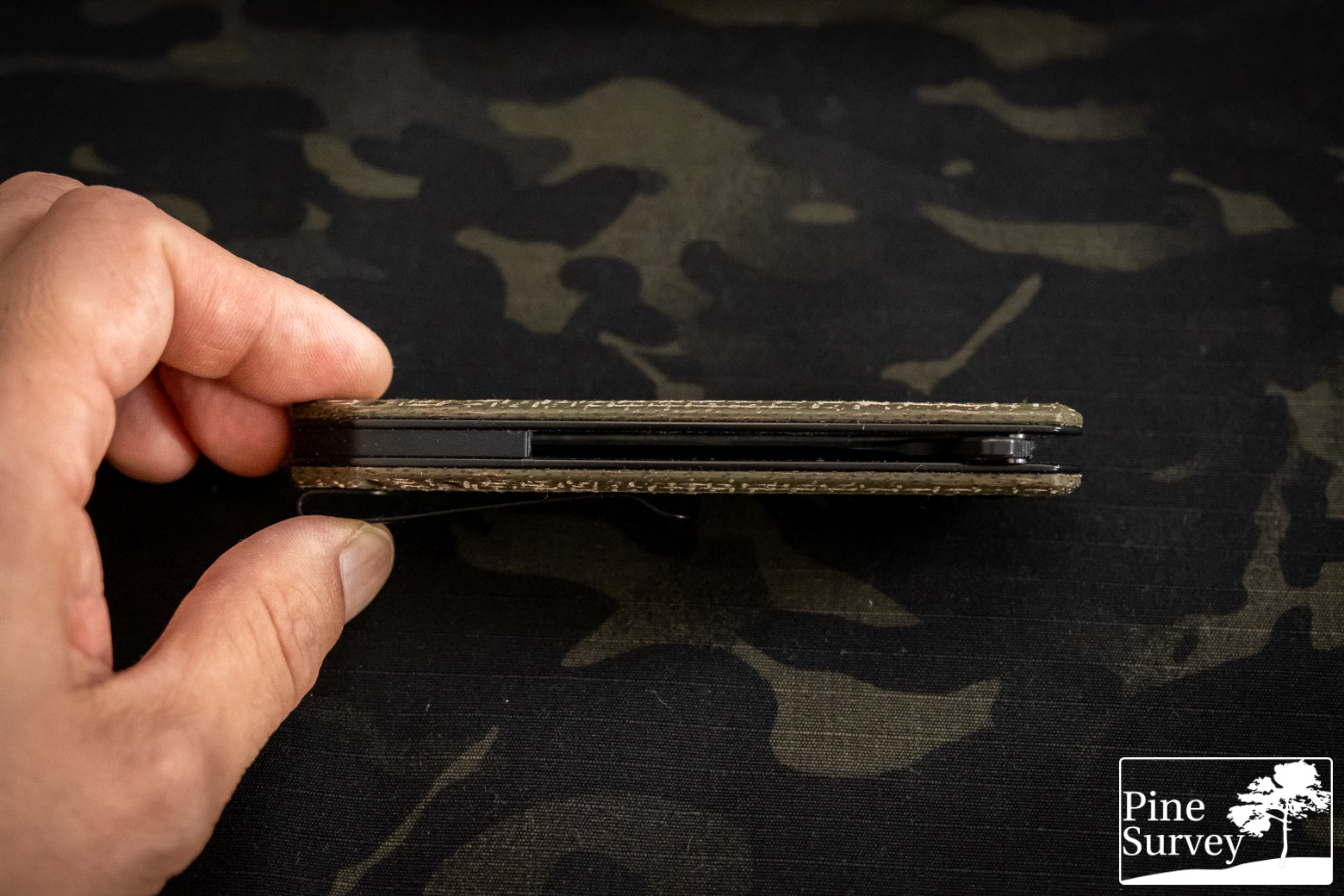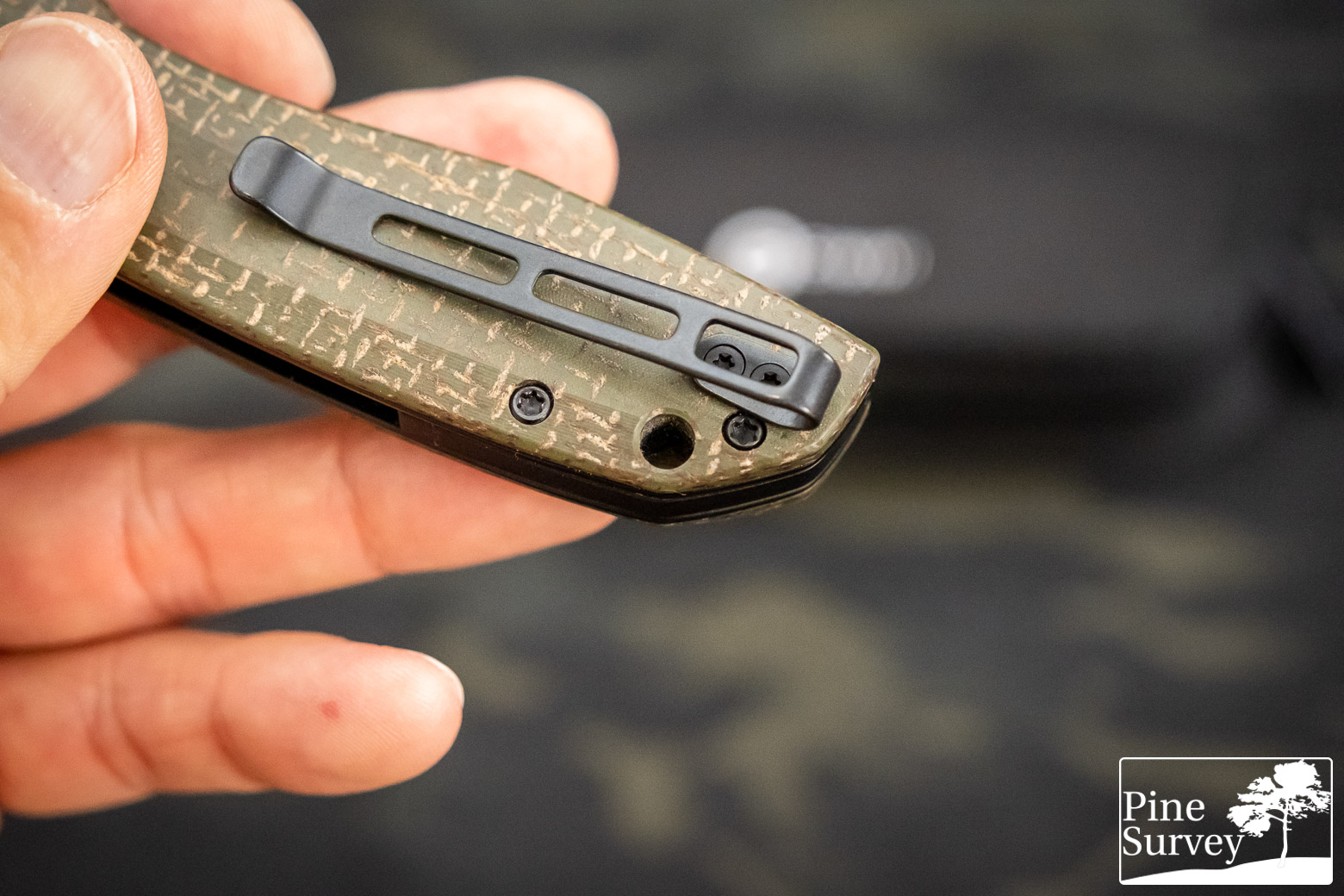Review: Civivi – Baklash Micarta
Introduction
With the Baklash Micarta I am using a flipper of Civivi for the very first time. The design of the Baklash caught my eye early on, so I was very happy to be able to take a closer look at this new version of the knife.
I have to admit, it took me some time to write down my thoughts, however this gave me plenty of opportunities to use the knife on a daily basis. And with daily I really mean daily, as this knife continues to be the first one I grab, in the morning.
So let’s get an overview and some specs, before going into more detail.
Overview
The Civivi Baklash Micarta is a new version of the Baklash design, which is available for some time now from the company. It is a medium sized EDC flipper with a black stonewashed drop point blade, made of 9Cr18MoV steel, as well as sporting unique looking Micarta scales. A deep carry pocket clip offers a tip up carry on the left and right side and ceramic ball bearings assist in a quick deployment.
Specs
- Overall Length: 8.10″ / 206mm
- Width: 1.39″ / 35.3mm
- Blade Length: 3.50″ / 89mm
- Blade Thickness: 0.12″ / 3mm
- Knife Weight: 3.62oz / 102.6g
- Blade Material: 9Cr18MoV
- Blade Hardness: 57-59HRC
- Handle Material: Coarse Micarta (green)
- Back Spacer Material: G10
The Civivi Baklash Micarta
The Civivi Baklash is a medium sized flipper – with an overall length of 20,6 cm, while being 11,7 cm long when closed. Opening the knife is very easy as it is supported by ceramic ball bearings. It flips open with a satisfying sound and locks up securely with a liner lock.



A drop point blade made of 9Cr18MoV steel features a curved thumb rest with nice jimping on top. The upper spine features a swedge, making the blade look a bit like a shark’s tooth – it certainly is as sharp as one!
This version of the Civivi Baklash features a black stonewash finish, which gives the blade a very apocalyptic look in combination with the micarta scales. There is also a finger choil for a forward grip, however, one has to be careful as the cutting edge starts right next to it and might bite you.
The flipping lever also features some jimping to provide a secure flipping experience.
Looking at the Micarta scales: These are made of a coarse Micarta which is made of a net with a wide mesh. While the scales are profiled, beveled and polished on the angles, the flat surface in the middle was left unpolished. This produces a pale, cloudy surface which also has a bit more of a grip to it.



The scales are attached to skeletonized, stainless steel scales, which also serve as linerlock. The metal is covered with a black coating and is kept in place by a G10 spacer at the butt of the knife.




Hexagon screws keep everything in place and the clip can be mounted on the left and right side of the Civivi Baklash. Tip up only.


Manufacture
As I already mentioned in previous reviews, it is amazing what quality Civivi Knife is offering compared to the price tag. The Micarta scales are perfectly fitted to the inner metal liners and the blade is clearly centered. There are no rough edges or bevels and the coating does the job.


Because of the material itself, the lanyard holes in the Micarta handles show some signs of machining, but even there the edges are beveled. The flat side of the Micarta is still pale and unpolished. I actually have no idea, if that is done on purpose or if they simply didn’t polish that section of the handles.
Other than that: Screws and axis are set in tightly into the handles with little tolerances, giving the knife a gorgeous overall look.
The Civivi Baklash in use
While the black coating of the inner scales was a bit of a disappointment at first as the shiny appearance makes it look a bit cheap, the knife immediately became my choice for everyday use. Honestly I do not know what it was, but the Civivi Baklash is always the first in my hands.
The size, quick deployment and razor sharp edge proved to be very versatile in everyday use. Just the other day it was used in a kitchen setting for cutting sweet potatoes, as there were not any decent kitchen knives available. And while the Micarta might have a rough look, it feels warm in the hand and provides a secure grip.


Flipping the knife is pure joy and the quick deployment is the result of an excellent flipping lever as well as the ceramic ball bearings in the axis. The liner lock secures the blade reliably, however, I wish it was more recessed in the handle. Usually the liner is on one level with the scales, but on the Civivi Baklash it slightly stands out to provide better access.
The black stonewash on the blade looks really awesome, but I managed to chafe it off at the swedge towards the tip. Other than that there are no complaints – if you can call it that. Because so far the knife has managed to do everything I have thrown at it and the 9Cr18MoV blade held up to the task and its sharpness.
Conclusion
Having only used fixed blades of Civivi so far, I was curious how the folding knives – or in my case a flipper – would perform. And as it turns out, the Civivi Baklash did not disappoint as well. The overall design and manufacture is excellent, especially for this price and I am considering getting another version of it in G10 or even the brass version.
The used 9Cr18MoV steel holds up its edge remarkably and is easy to sharpen. Combined with the deep carry clip the Civivi Baklash is a constant companion and still fascinates me with its design.
Especially for those looking for an EDC knife below 100€ the Civivi Baklash is worth taking a look at. With that being said, I hope I was able to give you a decent overview of the knife!
Many thanks for reading and also thank you to Civivi, who made this review possible!
Take care!









No Comment
You can post first response comment.